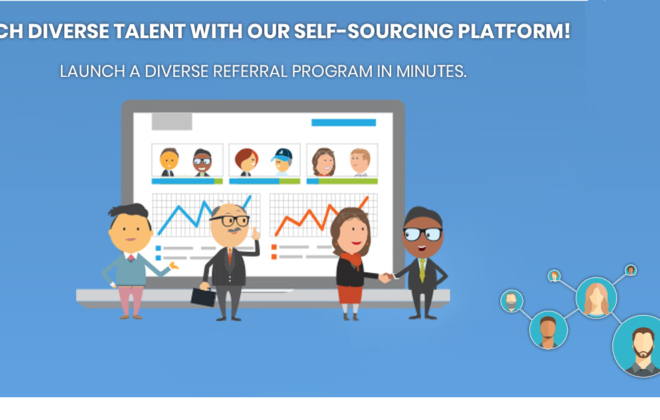7 Game-Changing Tips to Successfully Manage a Distributed Workforce
Managing a distributed workforce can present several unique challenges for staffing consultants. With remote work becoming more common, adapting to the changing workplace and developing strategies to manage remote teams effectively is essential.
In this article, we have listed down the top pain points for the distributed workforce and will explore seven game-changing tips for successfully managing a distributed workforce.
Top Pain points for the Distributed Workforce
1-Communication and Collaboration Issues
Communication and collaboration can be challenging when managing a distributed workforce. According to a survey conducted by Buffer, 20% of remote workers cited communication and collaboration as their biggest challenges.
This is particularly true for teams that are distributed across different time zones, making it harder to schedule meetings and communicate in real time.
2-Lack of Visibility and Accountability
Managers may find it difficult to track the work of their remote employees, leading to a lack of visibility and accountability. According to a survey by Owl Labs, 22% of remote workers said that their biggest challenge was not being able to collaborate and communicate effectively with their team.
3-Burnout and Isolation
Remote work can be isolating, leading to feelings of burnout and loneliness. According to a survey conducted by Indeed, 50% of remote workers said they experienced burnout compared to 43% of on-site workers. Additionally, 45% of remote workers said they felt lonely compared to 25% of on-site workers.
4-Security and Data Protection
With remote work, there are additional security concerns related to data protection and privacy. According to a survey conducted by OpenVPN, 90% of IT professionals said they were concerned about the security of remote work.
5-Technology Challenges
Remote work can also bring technology challenges, such as internet connectivity issues, outdated equipment, and difficulty accessing company systems.
According to a survey conducted by Global Workplace Analytics, 20% of remote workers cited technology challenges as their biggest issue.
7 Tips for Managing a Distributed Workforce
1-Hire the Right Candidates
When building a remote team, hiring suitable candidates who are self-motivated, self-disciplined, and can work independently is essential. Remote employees must be comfortable working from home or another remote location and possess the necessary technical skills.
Assessing candidates’ ability to work remotely during the interview process can help you identify the right fit for your team.
2-Establish Clear Communication Guidelines
Effective communication is critical for managing a distributed workforce. Clear communication guidelines and protocols can help team members stay connected and informed.
Ensure that team members know how and when to communicate with each other, what tools to use, and what information to share. Encourage frequent communication through video conferencing, instant messaging, or email.
3-Provide the Right Tools
Providing remote employees with the right tools and technology is essential for success. Ensure your team can access secure networks, cloud-based storage, and project management software.
Remote employees also require reliable internet and phone connections to stay connected and productive.
4-Set Clear Expectations and Goals
Setting clear expectations and goals for your remote team ensures everyone is on the same page. Establish performance metrics and KPIs to measure team members’ productivity and hold regular check-ins to review progress.
Setting deadlines and timelines also helps ensure that projects are completed on time.
5-Promote Collaboration and Teamwork
Promoting collaboration and teamwork among remote employees can help build a sense of community and engagement. Encourage team members to collaborate on projects and share their knowledge and expertise.
Regular team-building activities can also support remote employees to feel connected and engaged.
6-Prioritize Work-Life Balance
Managing a distributed workforce requires a delicate balance between work and life. Remote employees can easily fall into the trap of working long hours and losing track of time. Encourage remote employees to establish a routine, set boundaries, and take breaks throughout the day.
Prioritizing work-life balance can help remote employees avoid burnout and remain productive.
7-Provide Support and Feedback
Providing remote employees with support and feedback is essential for their growth and development. Regularly check in with your team members to offer feedback on their performance and provide resources to help them improve.
Encourage open and honest communication, and provide opportunities for training and development to help your team members succeed.
How Infojini can help?
Managing a remote team can be challenging, and there are many pain points that organizations may encounter. Remote workers can feel isolated, experience communication challenges, and struggle with work-life balance. Additionally, technical issues such as unreliable internet connectivity and inadequate hardware can impede productivity and cause frustration.
However, with the right strategies and tools, these pain points can be mitigated, and remote teams can be managed effectively. This is where Infojini, as a staffing consultant, can help organizations manage their distributed workforce. We offer a range of solutions and services to help organizations optimize their remote workforce.
Our team of experts can help organizations identify and implement the right tools and technologies to support their remote employees. We can also help organizations establish communication guidelines and performance metrics to ensure that their remote teams are productive and engaged. Our services also include hiring and onboarding, remote employees, promoting collaboration and teamwork, and fostering a sense of community among remote teams.
In addition to our services, we offer training and support for remote employees and managers, helping them navigate the challenges of remote work and build effective remote teams. Our goal is to help organizations maximize the benefits of remote work while minimizing the challenges.
Contact Infojini today to learn how we can help you manage your distributed workforce and achieve your business goals.
A Guide to Contingent Workforce Management
This report covers all you need to know about
using talent intelligence to transform your
workforce strategy.
Conclusion
In conclusion, managing a distributed workforce can be challenging, but with the right strategies and support, organizations can overcome the pain points of remote work and thrive. As a staffing consultant, Infojini is committed to helping organizations manage their distributed workforce effectively and achieve their goals.
Related Posts
Subscribe For Updates
Categories
- Accountant
- AI
- Automation
- Awards and Recognitions
- Blue Collar Staffing
- Burnouts
- Campus Recruiting
- Cloud
- Co-Ops agreements
- Company Culture
- Compliance
- contingent workforce
- Contingent Workforce
- COVID-19
- Cyber Security Staffing
- Data Strategy
- Digital Transformation
- direct sourcing
- Distributed Workforce
- Diversity
- Diversity & Inclusion
- Economy
- Events & Conferences
- fleet industry
- Gig Economy
- Girls in Tech
- Global Talent Research and Staffing
- Government
- Healthcare
- Healthcare Staffing
- Hiring Process
- Hiring Trends
- Home Helathcare
- HR
- HR Practices
- HR Tech
- IT
- Labor Shortages
- Life Science
- Local Governments
- News
- Nursing
- Payroll Staffing
- Public Sectors
- Recruiting
- Remote Work
- Skill Gap
- SMB Hiring
- Snowflake
- Staffing
- Staffing Augmentation
- Staffing Challenges
- Talent ROI
- Tech Staffing
- Technology
- Tips & tricks
- Total Talent Management
- UI/UX Design
- Uncategorized
- Veteran Staffing
- Veterans Hiring
- Veterans Hiring
- Workforce Management
Recent Posts
- Automation in Recruiting: From Chatbots to Predictive Screening
- Gig Economy Expansion: The Impact on Talent Pools and Business Models
- Skills-Based Hiring: Why Credentials Alone Don’t Cut It in 2025
- Procurement 3.0: AI & Intelligent Automation in 2025
- Q3 Is Here: Is Your Contingent Workforce Strategy Falling Behind?
Newsletter
Archive
- September 2025
- August 2025
- June 2025
- April 2025
- March 2025
- December 2024
- November 2024
- October 2024
- September 2024
- August 2024
- July 2024
- June 2024
- May 2024
- April 2024
- March 2024
- February 2024
- January 2024
- December 2023
- November 2023
- October 2023
- September 2023
- August 2023
- July 2023
- June 2023
- May 2023
- April 2023
- March 2023
- February 2023
- December 2022
- November 2022
- October 2022
- September 2022
- August 2022
- July 2022
- June 2022
- November 2021
- October 2021
- September 2021
- August 2021
- July 2021
- June 2021
- May 2021
- April 2021
- March 2021
- February 2021
- January 2021
- December 2020
- November 2020
- October 2020
- September 2020
- August 2020
- July 2020
- June 2020
- May 2020
- April 2020
- March 2020
- February 2020
- January 2020
- December 2019
- November 2019
- October 2019
- September 2019
- August 2019
- July 2019
- June 2019
- May 2019
- January 2019
- December 2018
- November 2018
- October 2018
- September 2018
- August 2018
- July 2018
- June 2018
- May 2018
- April 2018
- March 2018
- February 2018
- January 2018
- December 2017
- November 2017
- October 2017
- September 2017
- August 2017
- July 2017
- June 2017
- May 2017
- November 2016
- October 2016




